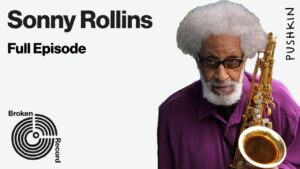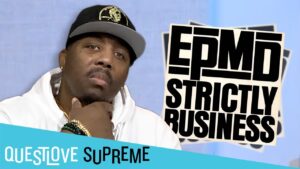In the latest episode of My Expert Opinion, host Math Hoffa & crew sits with Vlad as he offers a rare glimpse into the financial and logistical hurdles of running a media platform. From high-stakes investments to the impact of AI, Vlad provides a masterclass on the balancing act between cultural relevance and profitability.
For Vlad, investing $50,000 in an interview comes with high expectations. To make such an endeavor profitable, the content must garner at least 10 million views—a benchmark that ensures a return on investment after factoring in overhead costs and labor. He explains that, on average, a million views translate to approximately $5,000 in revenue. However, this figure fluctuates depending on YouTube’s CPM rates and the looming risk of demonetization.
Vlad recalls a particularly costly interview with Tupac Shakur’s father, a venture that didn’t deliver the expected viewership. While the interview resulted in financial losses, he considers it a long-term asset. He believes that interviews tied to cultural icons can gain traction over time, particularly when renewed interest arises around their legacy.
Operating a media platform is far from cheap. Vlad shares that he spends $20,000 monthly to maintain a New York-based studio, in addition to paying salaries and benefits for a dozen full-time employees. These costs highlight the challenges of balancing quality content with financial sustainability.
To adapt, Vlad has made some difficult decisions. He revealed that his platform no longer employs a writing team due to the declining profitability of written content. Once a cornerstone of his operation, written news articles have been replaced by AI tools like ChatGPT, which generate captions and transcripts efficiently.
A major challenge for content creators like Vlad is the unpredictability of YouTube’s demonetization policies. If flagged content becomes demonetized, it can result in significant financial setbacks. Despite these challenges, Vlad emphasizes the importance of respecting interview subjects while finding ways to monetize even underperforming content.
Consumer habits have evolved, and Vlad’s business strategy reflects this shift. With audiences increasingly favoring bite-sized content on platforms like Instagram, long-form written content has taken a backseat. This change led to the removal of the written news section from his platform—a move he believes aligns with audience expectations.
Vlad acknowledges the efficiency of AI in streamlining tasks like transcription and caption creation. However, he admits to feeling conflicted about replacing loyal employees with AI tools. While the move has cut costs, it underscores the tough decisions required to keep a media business afloat.
Vlad ends the discussion by highlighting the delicate balance between creating culturally impactful content and maintaining financial viability. Whether it’s trimming underperforming departments or leveraging new technology, he stresses the importance of adapting to an ever-changing media landscape.






